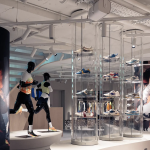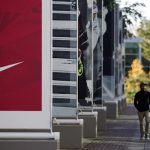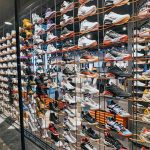Last year, the third quarter marked the true beginning of the financial crisis. Credit markets were frozen, consumers stopped shopping and retailers were left looking at full stock rooms and virtually no foot traffic. This year, the story is very different. Retailers have successfully slashed inventories, and vendors have learned to cope with a business environment that has been termed, “the new normal.”
Since much of America was more worried about the economy than the back-to-school or Holiday shopping last year, 2009 comparisons are much easier for retailers and vendors alike.
With the last of the third quarter reports now filed with the SEC, The B.O.S.S. Report presents a wrap-up of industry public company results shown in the chart on page 3 of this issue. Results are posted for those companies that have reported results for the period ended closest to the end of September. Because the report is not a total picture of the entire industry, B.O.S.S. feels the total numbers are less significant than the trending information provided in the percentage increases and decreases.
Overall sales for the publically reporting Bicycle, Outdoor and Snow Sports companies were down 1.4% for the quarter. However, it is clear that the market has reacted aggressively to the new economic environment by working to maintain margins, reduce inventory and cut overhead expenses.
Looking at the entire market, margins were up on average by 135 basis points and inventories were down just over 6%. This combined with lower SG&A expenses across the board added up to considerably higher profits across the board in Softgoods, Hardgoods, and at Retail.
The three biggest top-line gains came from Lululemon (+29.7%), Under Armour (+16.2%), and Deckers (+15.8%). Every Hardgoods vendor reported top-line sales declines in the third quarter. Retailers are clearly seeing stronger top-line growth than vendors as they continued to pare-down inventories in the third quarter without placing significant re-orders leading into the holiday season.
However, the fact that these retailers saw decent average increase in sales is definitely one of the many green shoots in the economy that impacts the Bicycle, Outdoor and Snow Sports market. These retailers can only support so much growth off of existing inventories and re-orders are likely in the near future, especially if the final few weeks of holiday shopping are strong.
Looking at the Softgoods market, the biggest impact was the bounce-back experienced by Crocs, following a dismal third quarter with 1.4% gross margins in 2008. This year, margins returned to normal and lifted the entire sector. Excluding Crocs from the mix, Softgoods margins would have been down 56 basis points and overall income for the sector would have been up 5% .
There was no clear line of distinction between footwear or apparel companies, with some performing well with sales and profits increases and others showing declines. However, the Softgoods sector reported a healthy increase in return-on-sales (ROS) a metric that measure profitability as a function of sales volume. ROS for Softgoods actually doubled to 14.4% of sales in Q3.
While the Hardgoods sector of the Bicycle, Outdoor and Snow Sports market did not show any top-line growth, the bottom line was considerably stronger. Hardgoods companies also saw the most aggressive inventory cuts. On average inventories were down 31.0% which helped drive average profits up 60.2%. This increase was thanks in large part to Johnson Outdoors drastically cutting their Q3 loss and Head N.V. drastically increasing their Q3 profits.
While ROS in the Hardgoods sector remained well below that of Softgood Vendors, it still showed growth. On average ROS for Hardgoods vendors increased 320 basis points to 7.6%.
The retail sector again proved that they are indeed calling the shots. Retail sales and profits out-paced Hardgoods and Softgoods vendors. On average, retail sales were up 4.8% for the quarter, with relatively flat gross margins and a whopping 159% increase in profits. The last twelve months have certainly taught retailers how to operate at a new level of efficiency. With some early signs of increasing consumer confidence, this efficiency may produce record profits as wallets open again.















